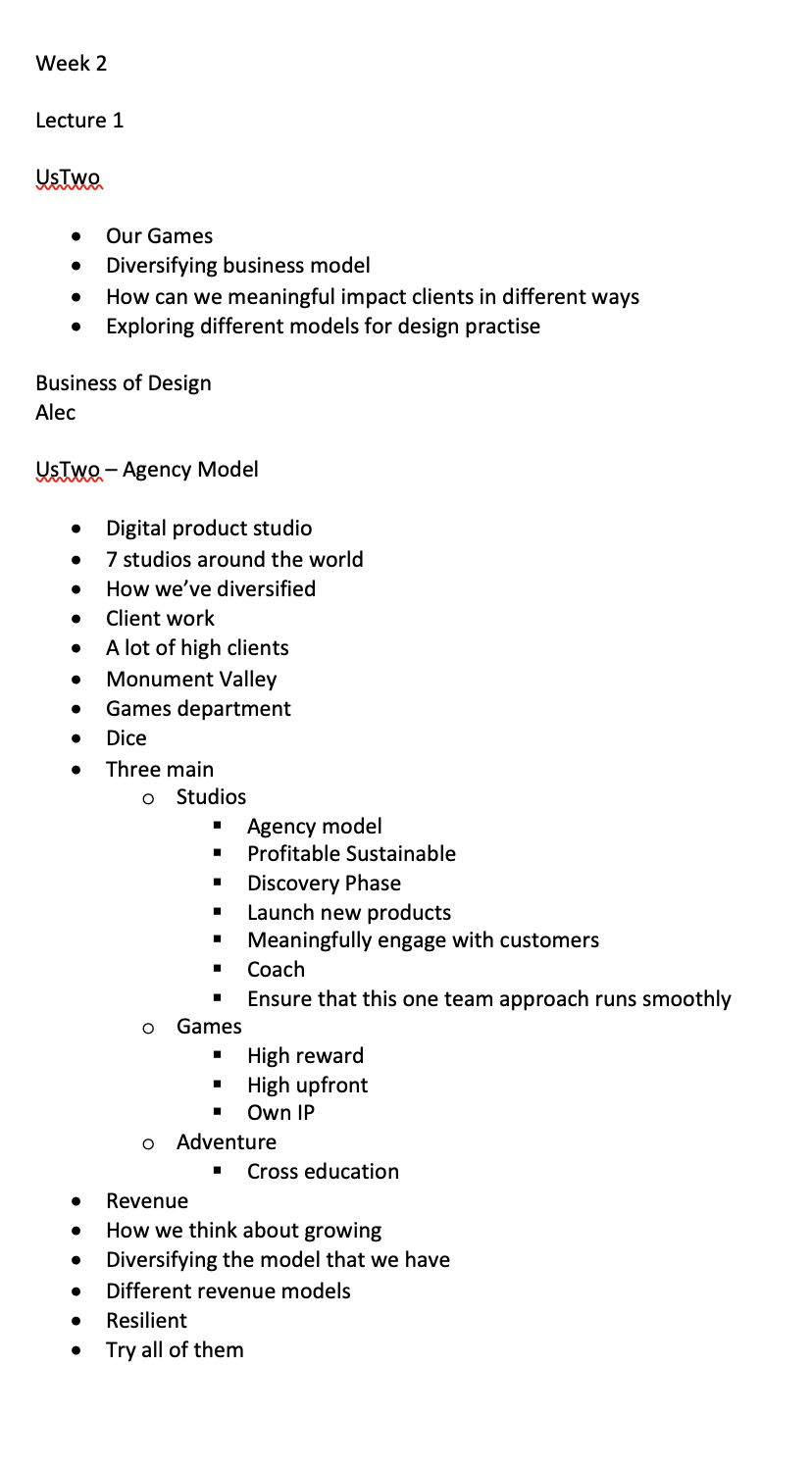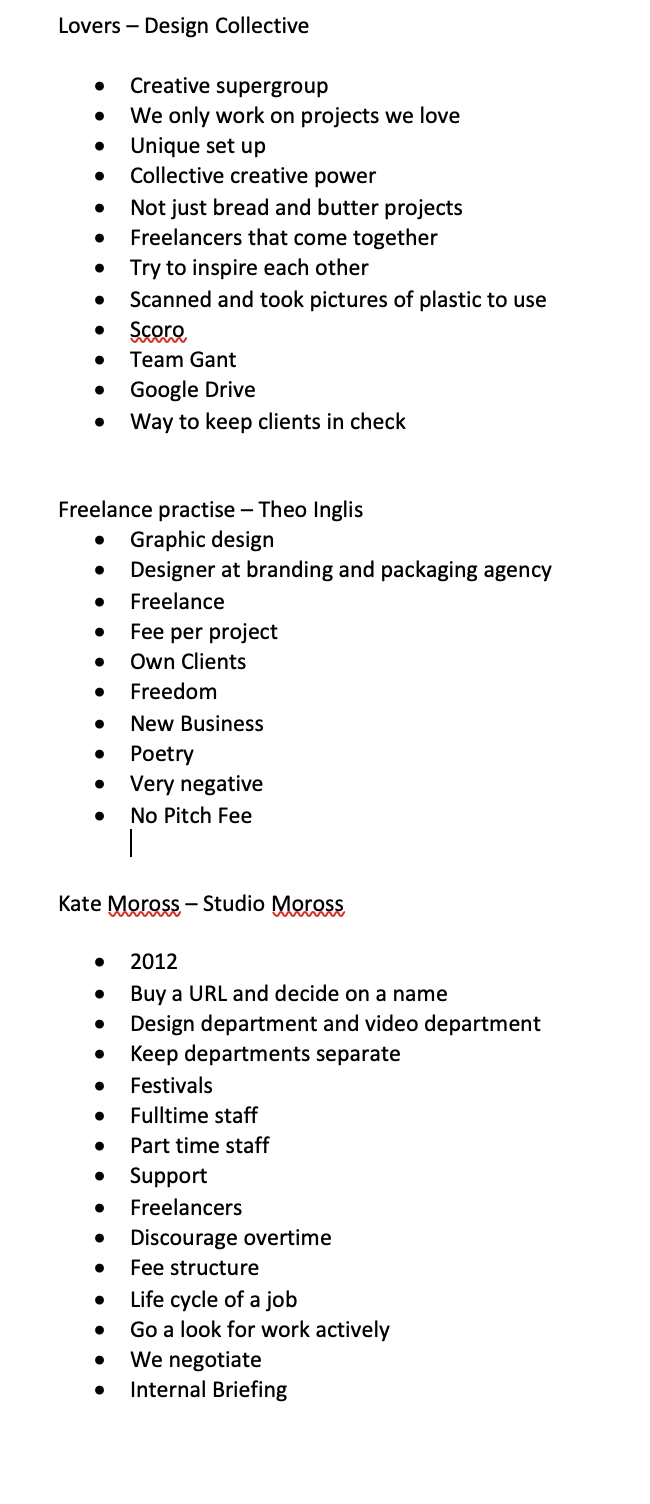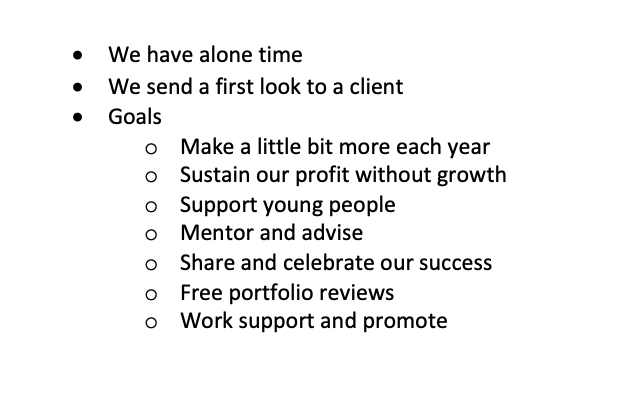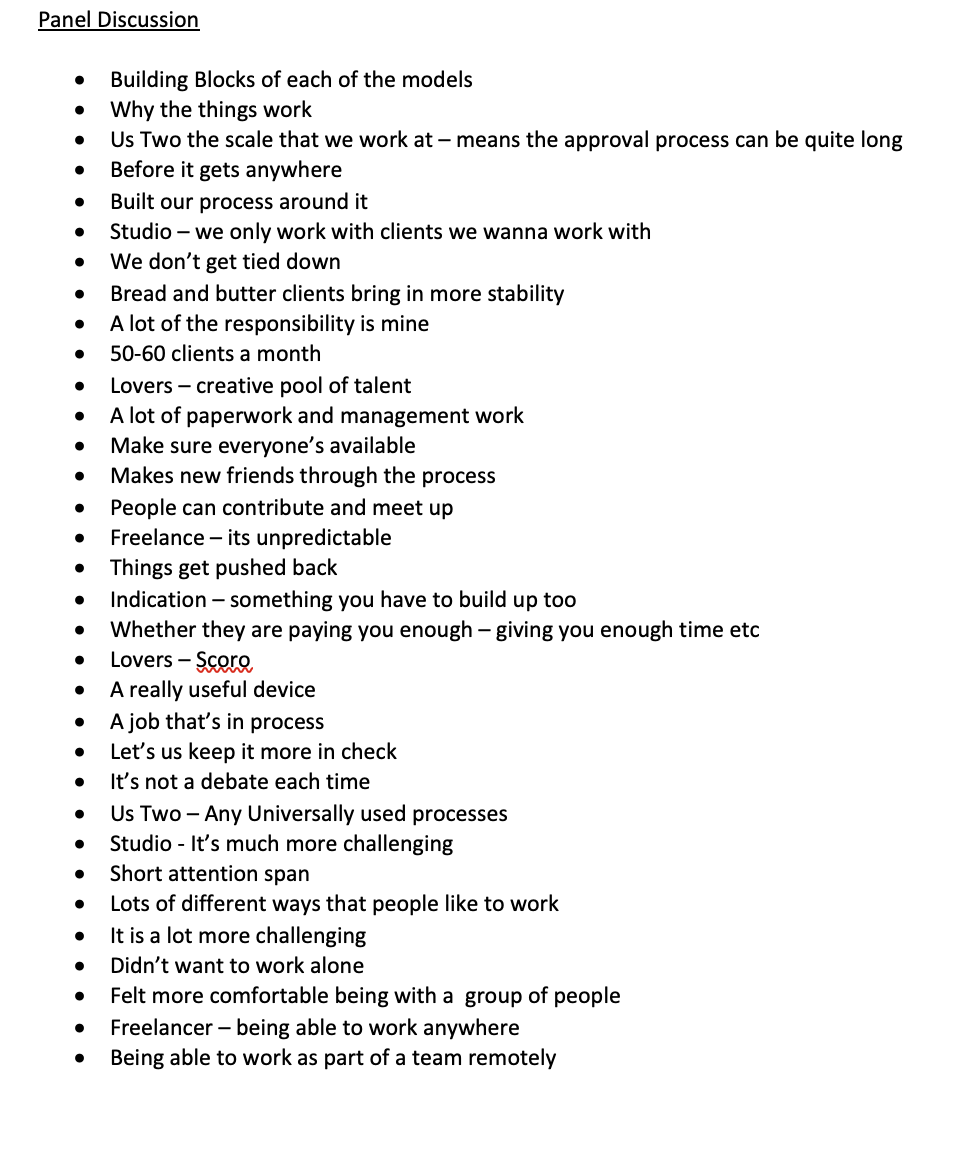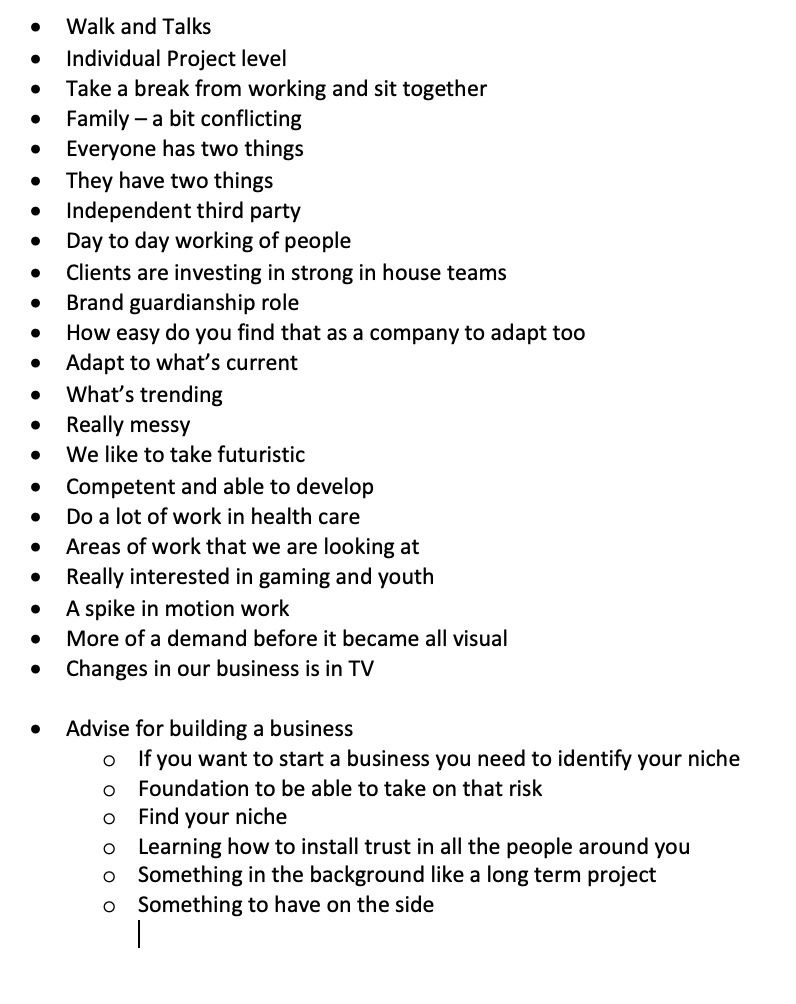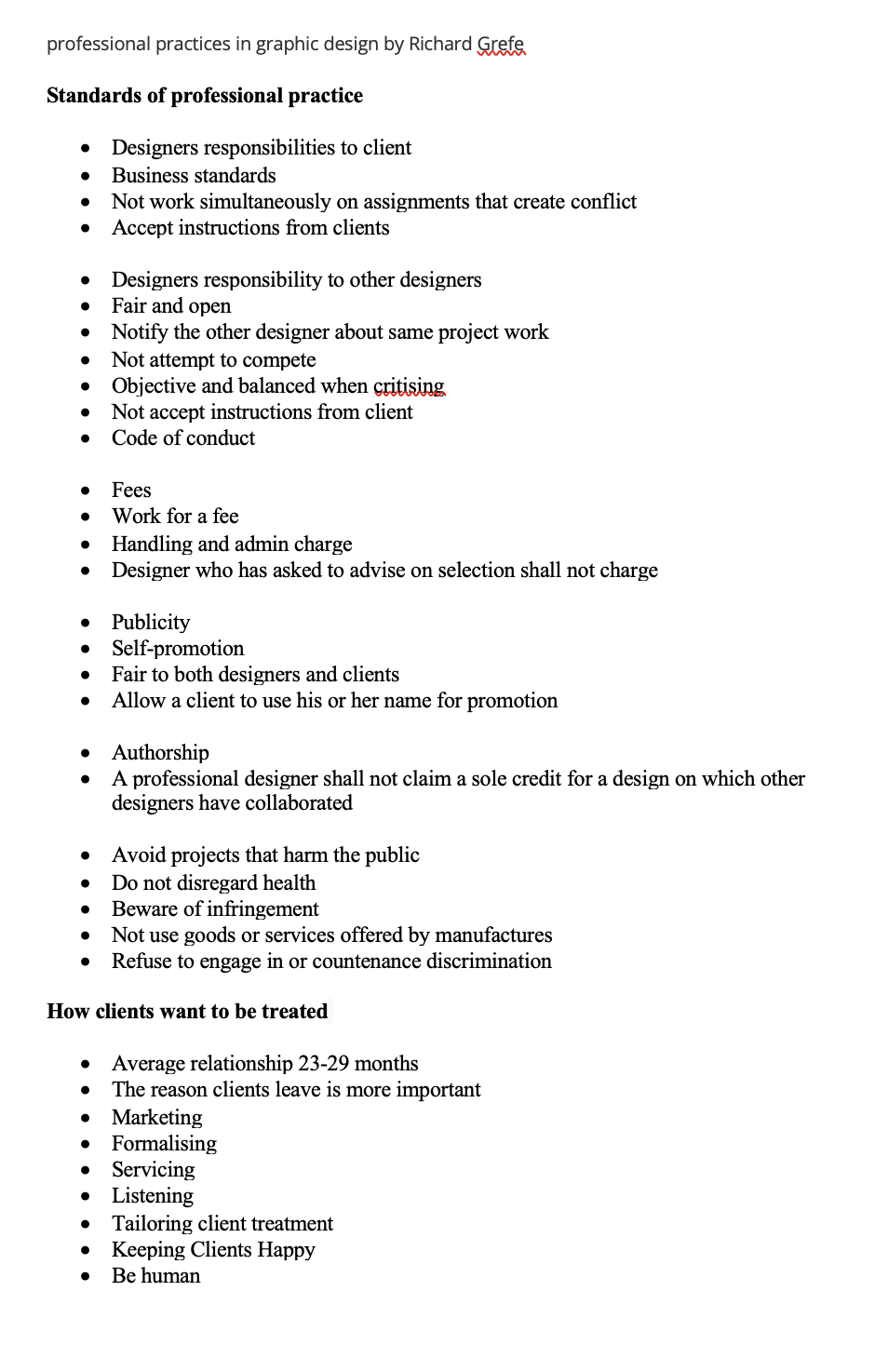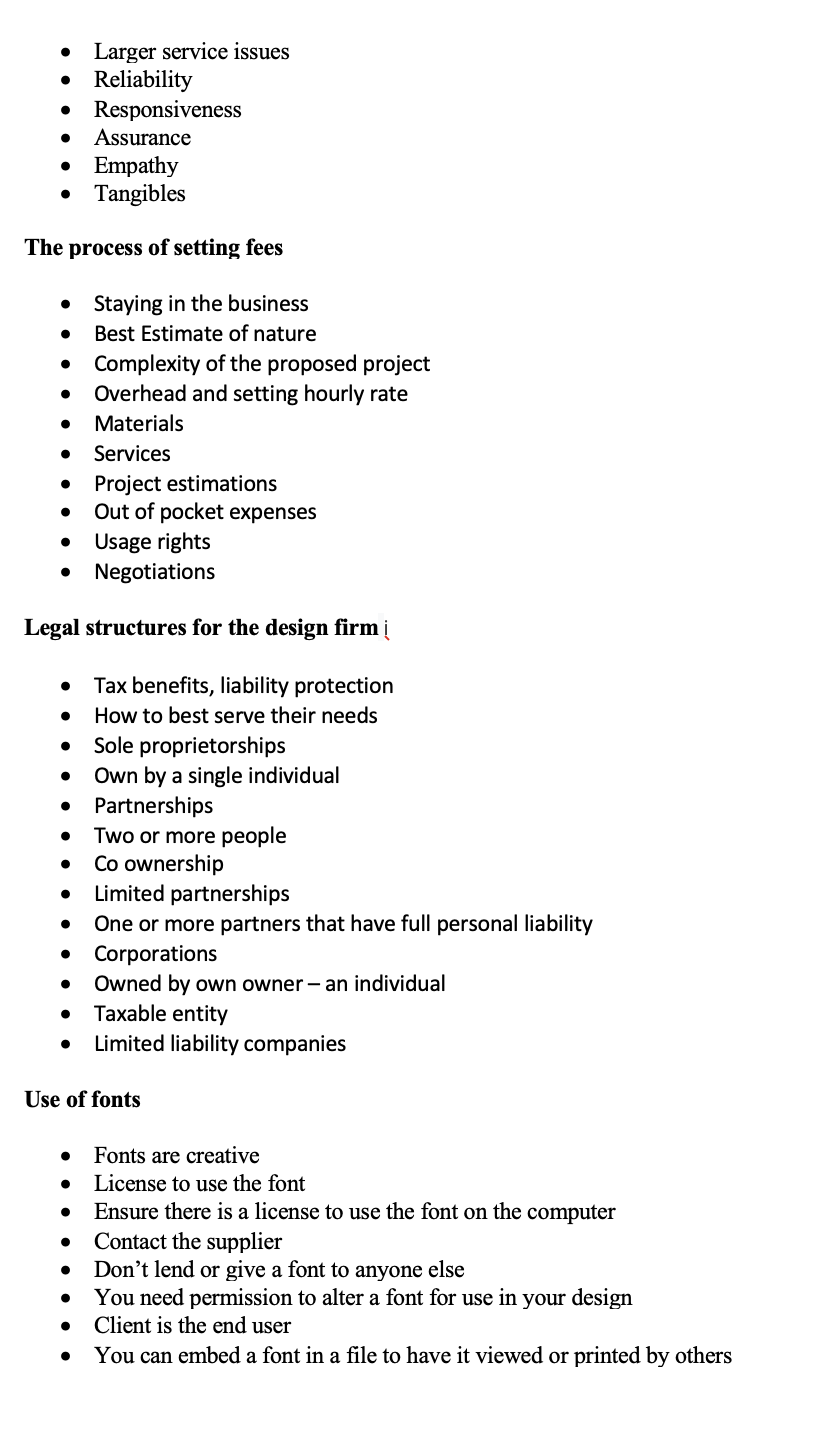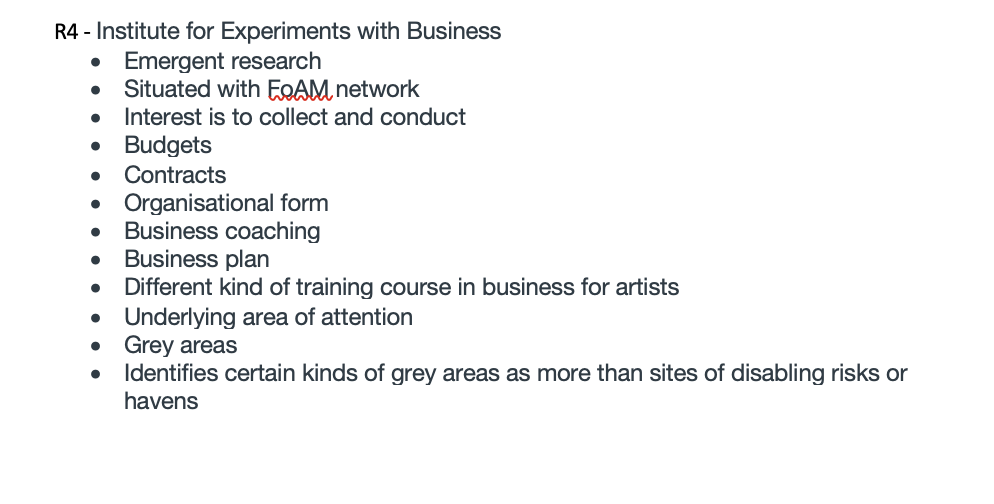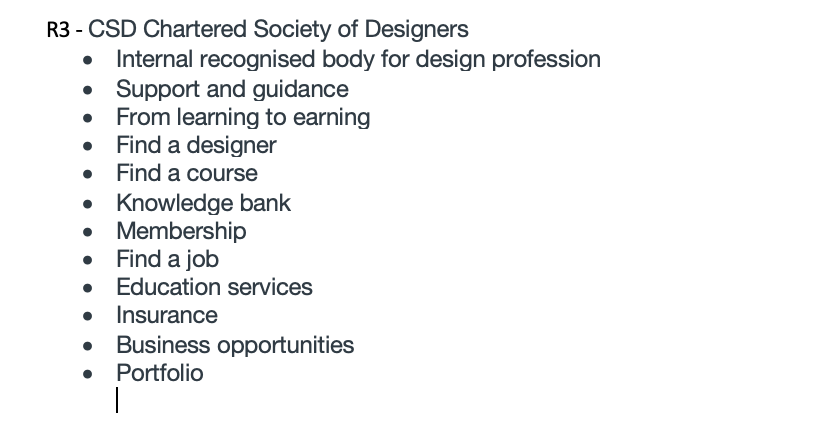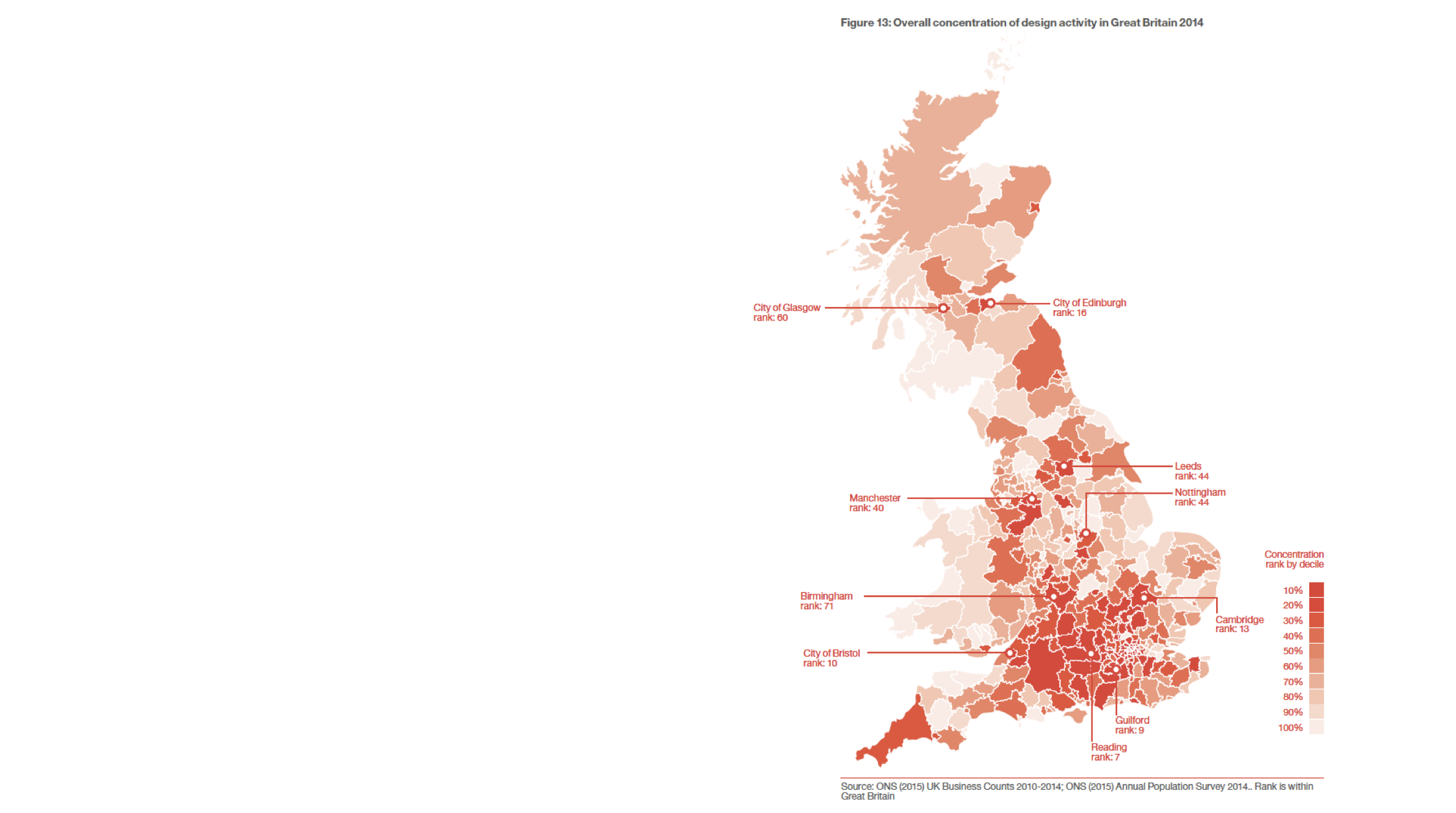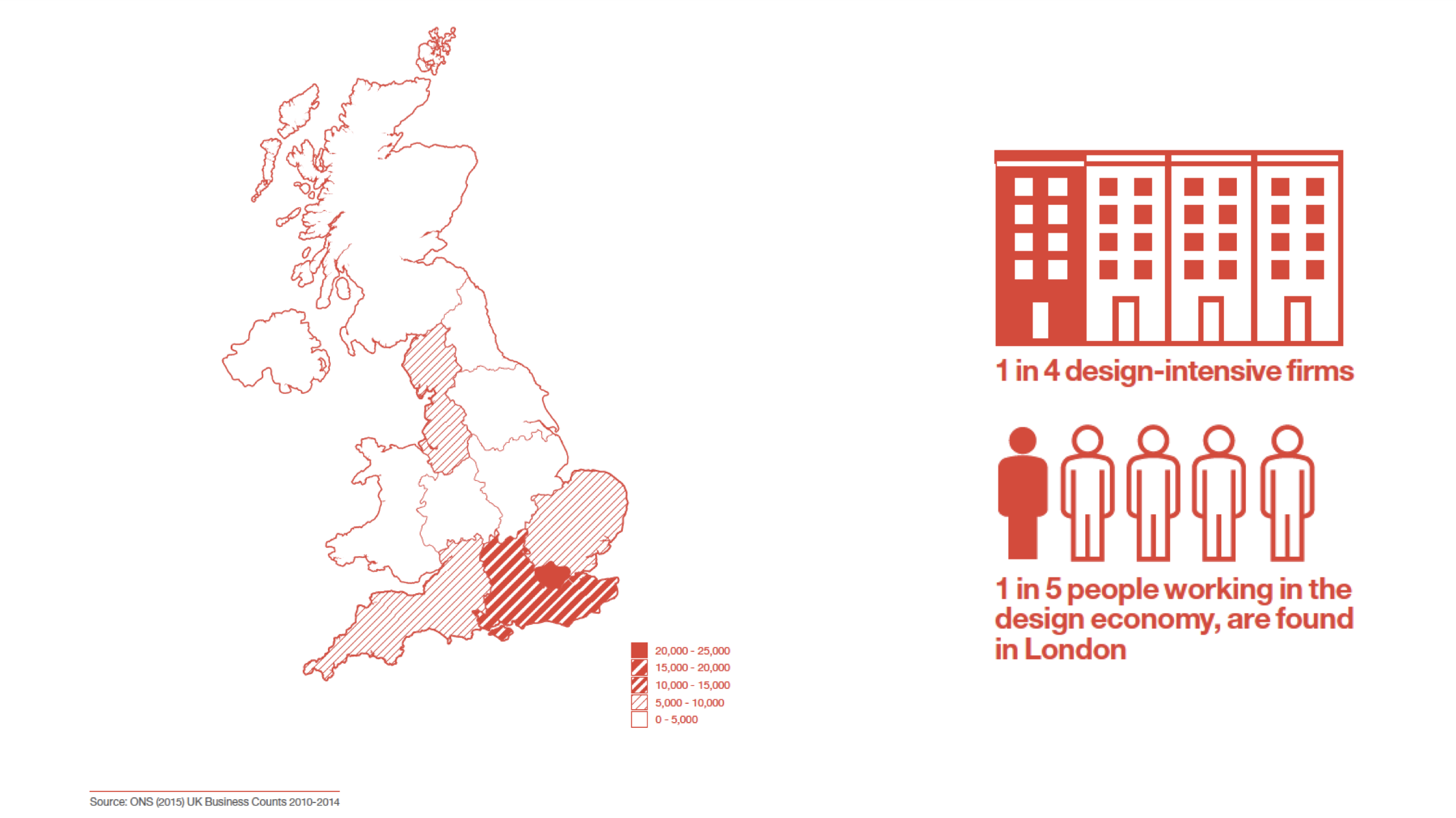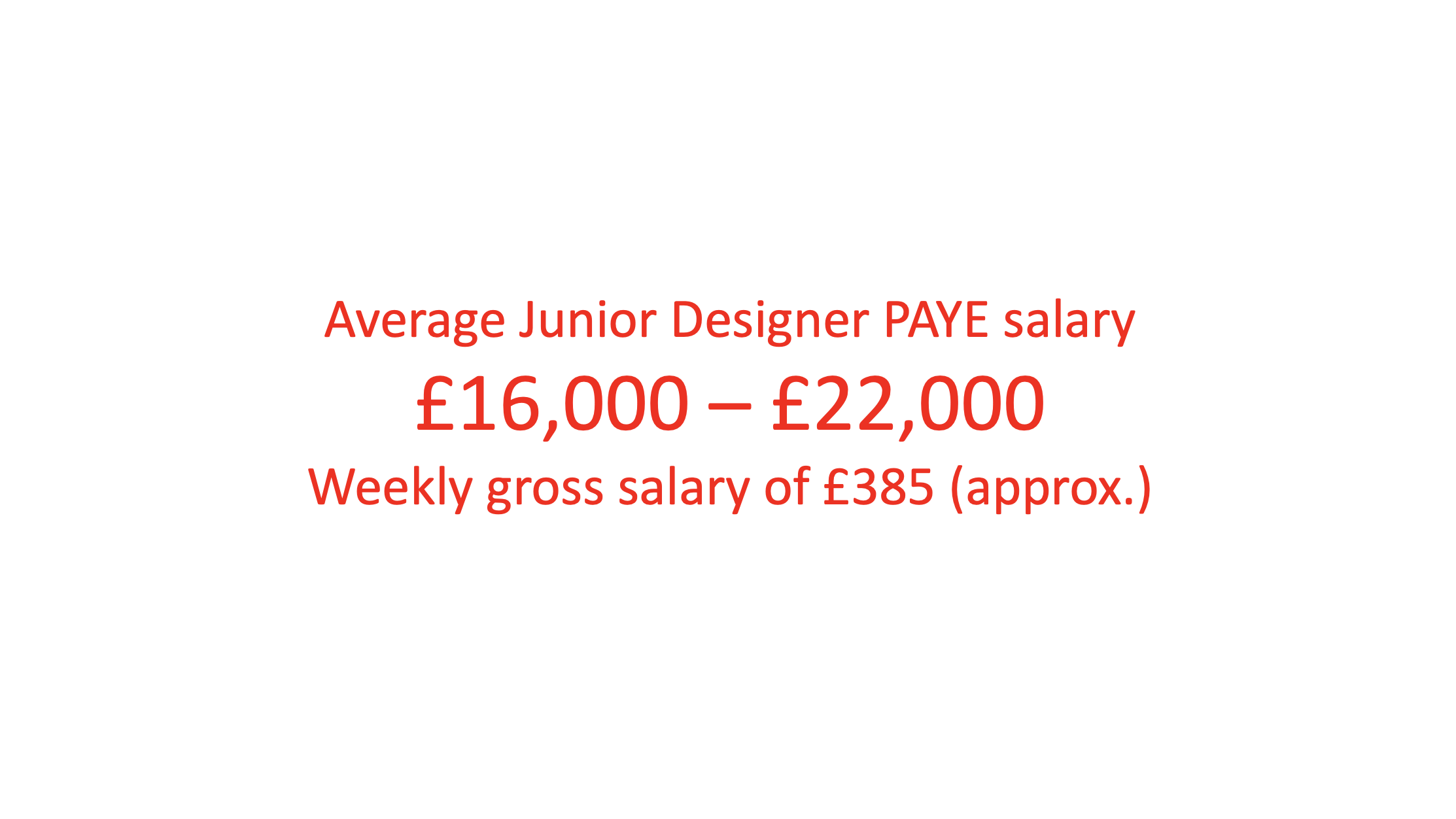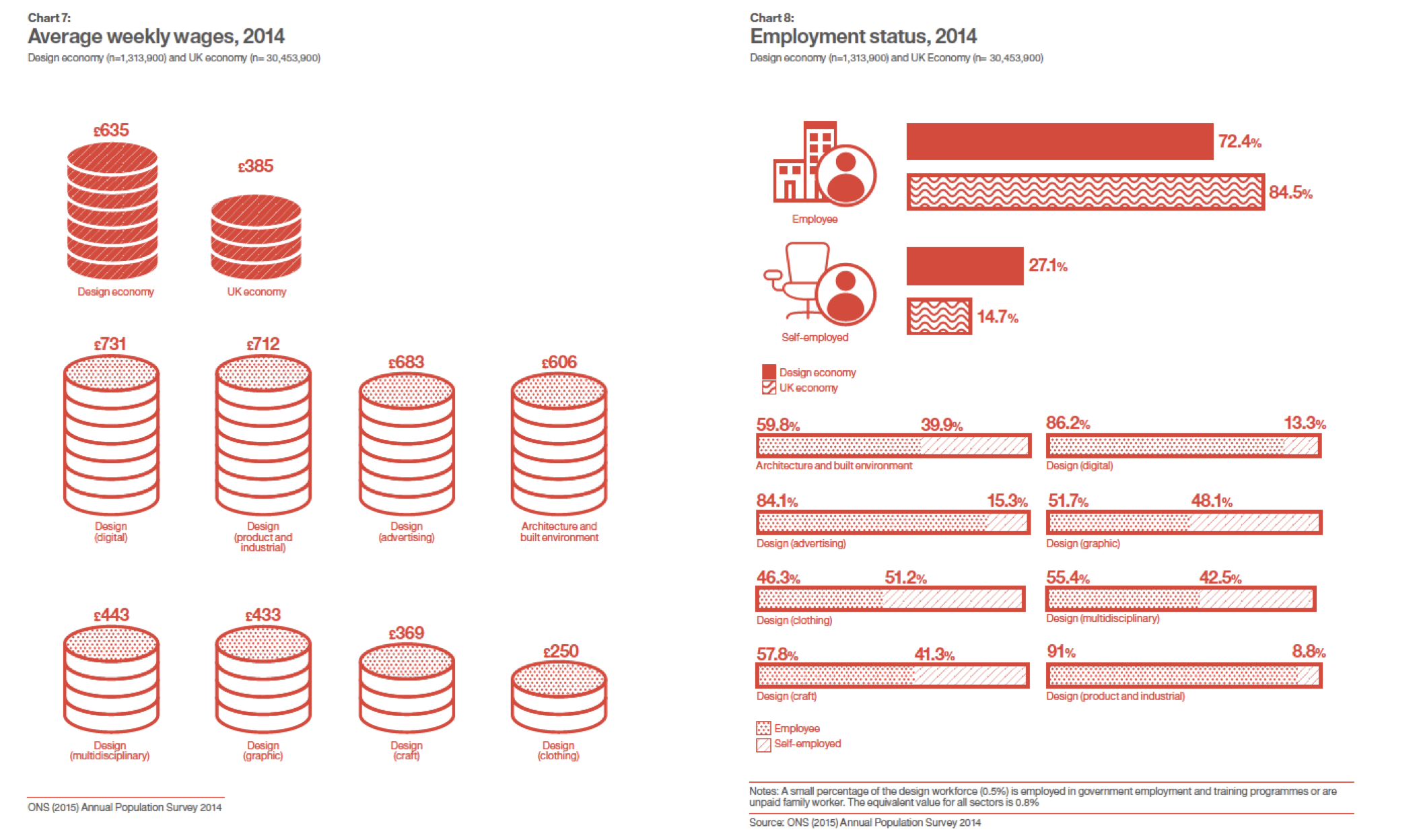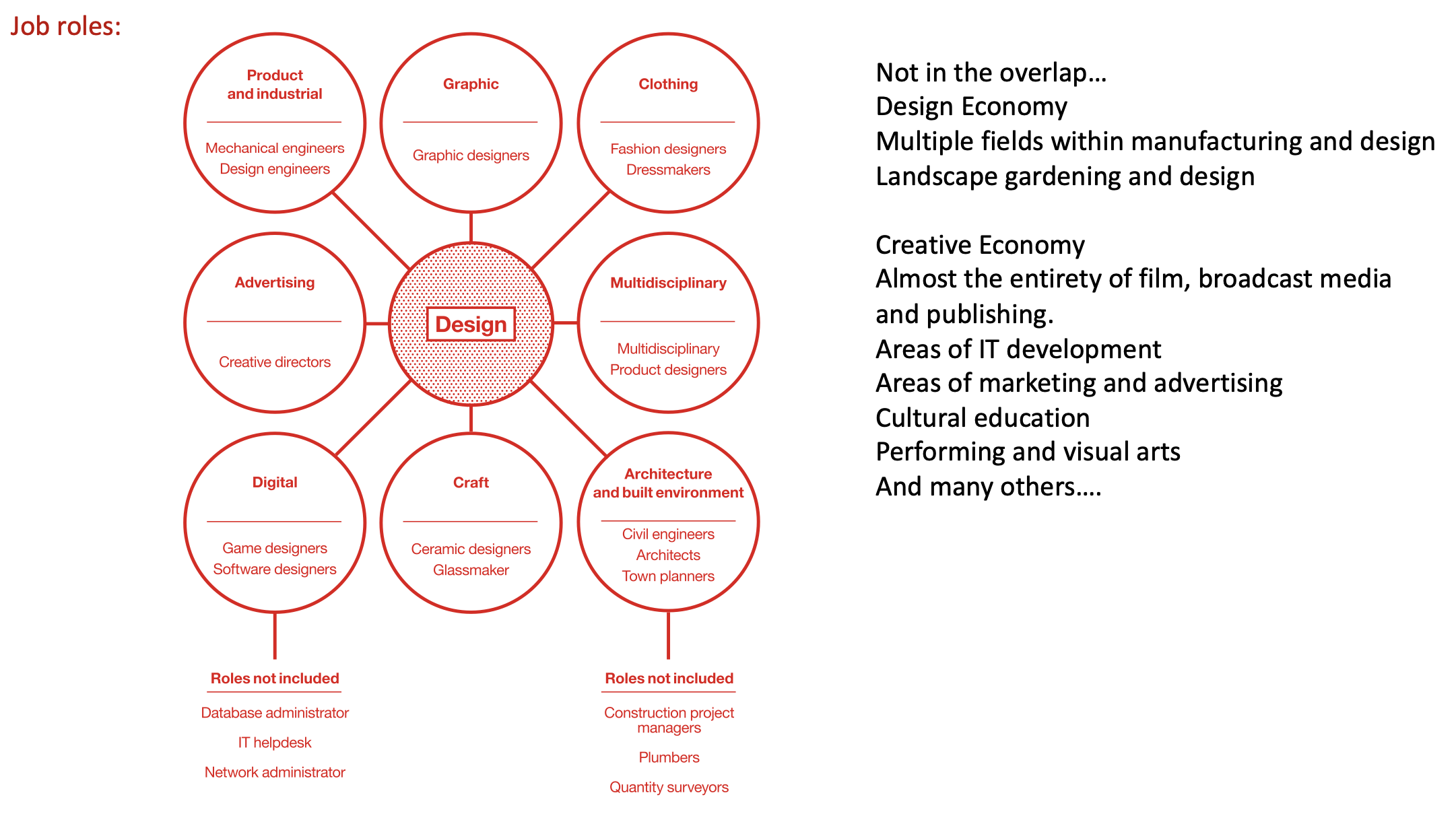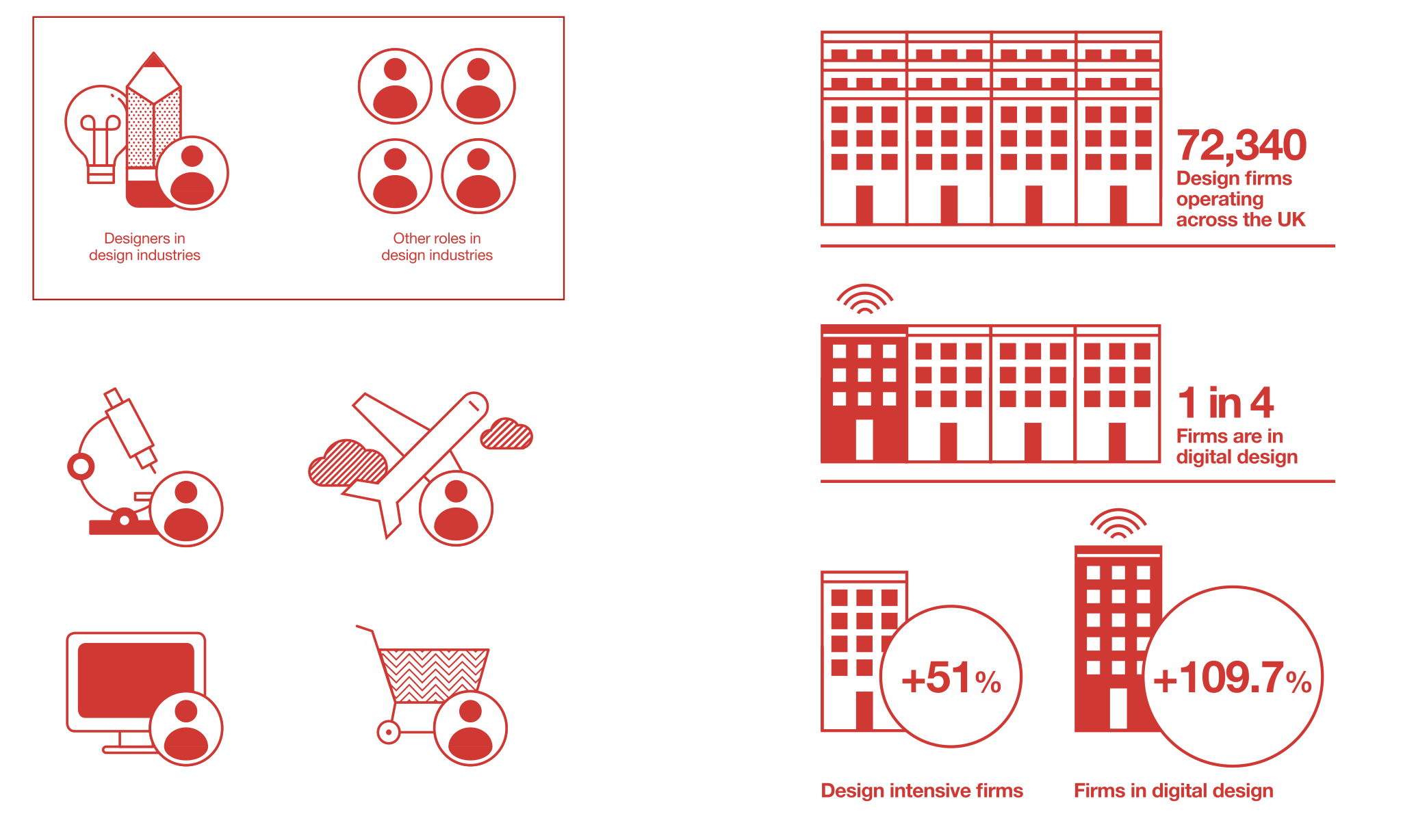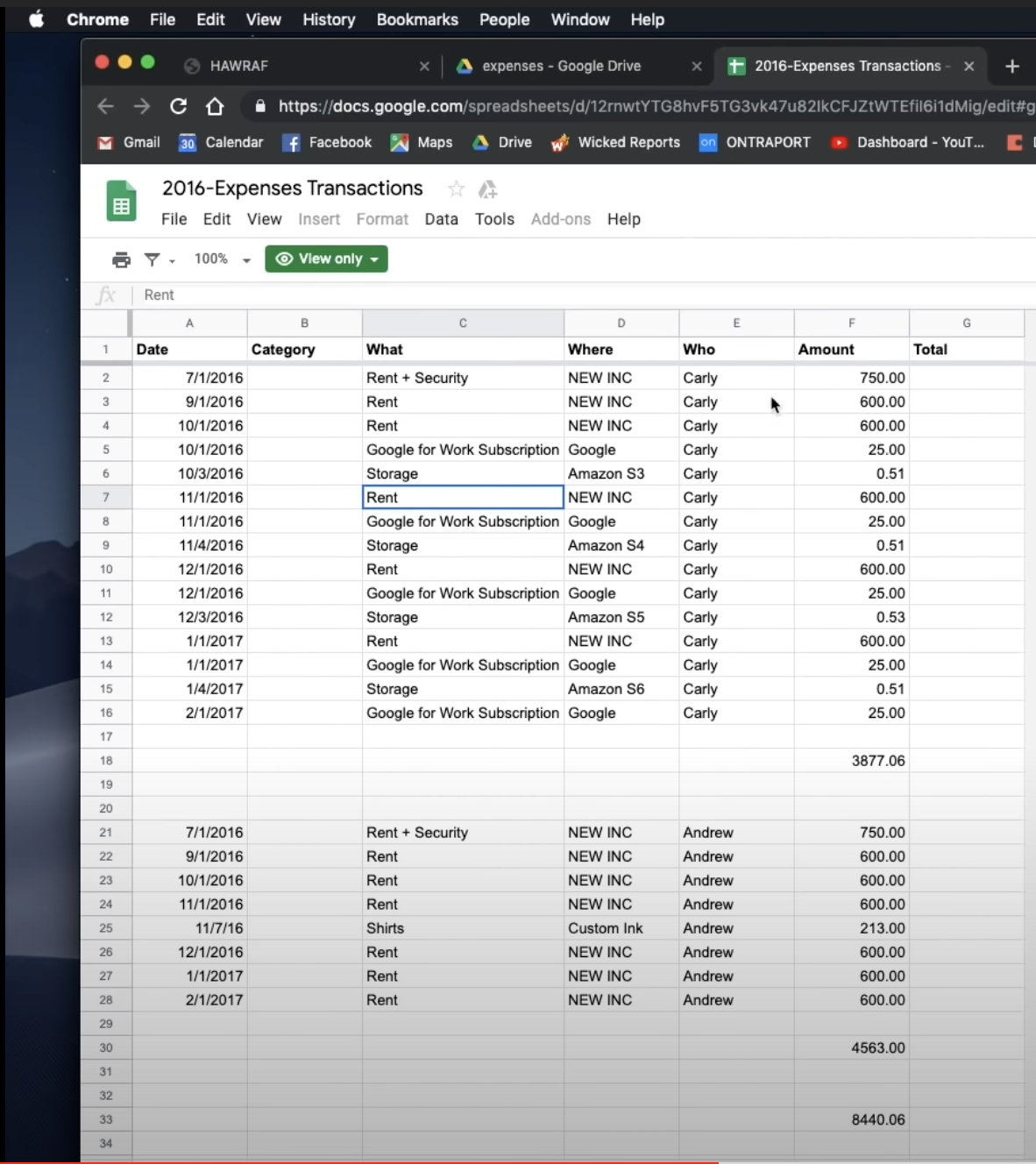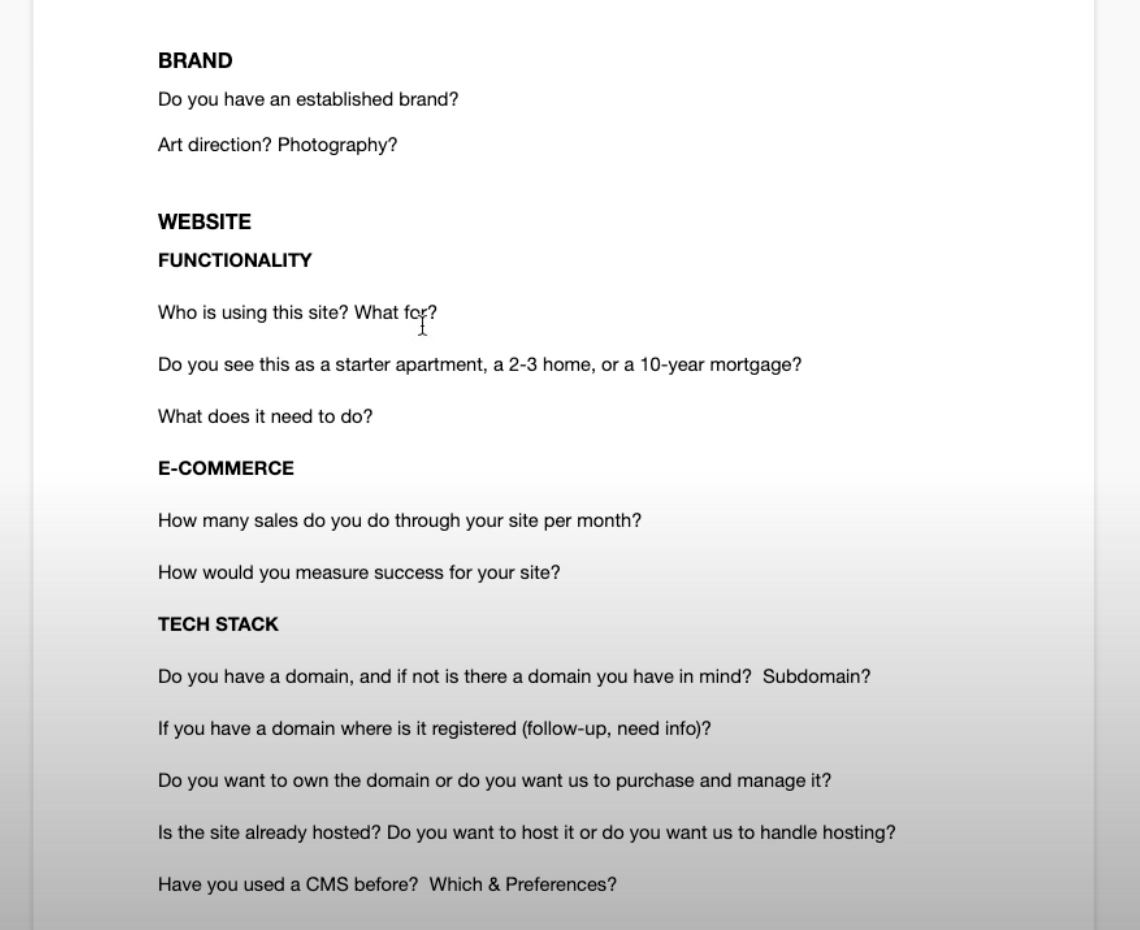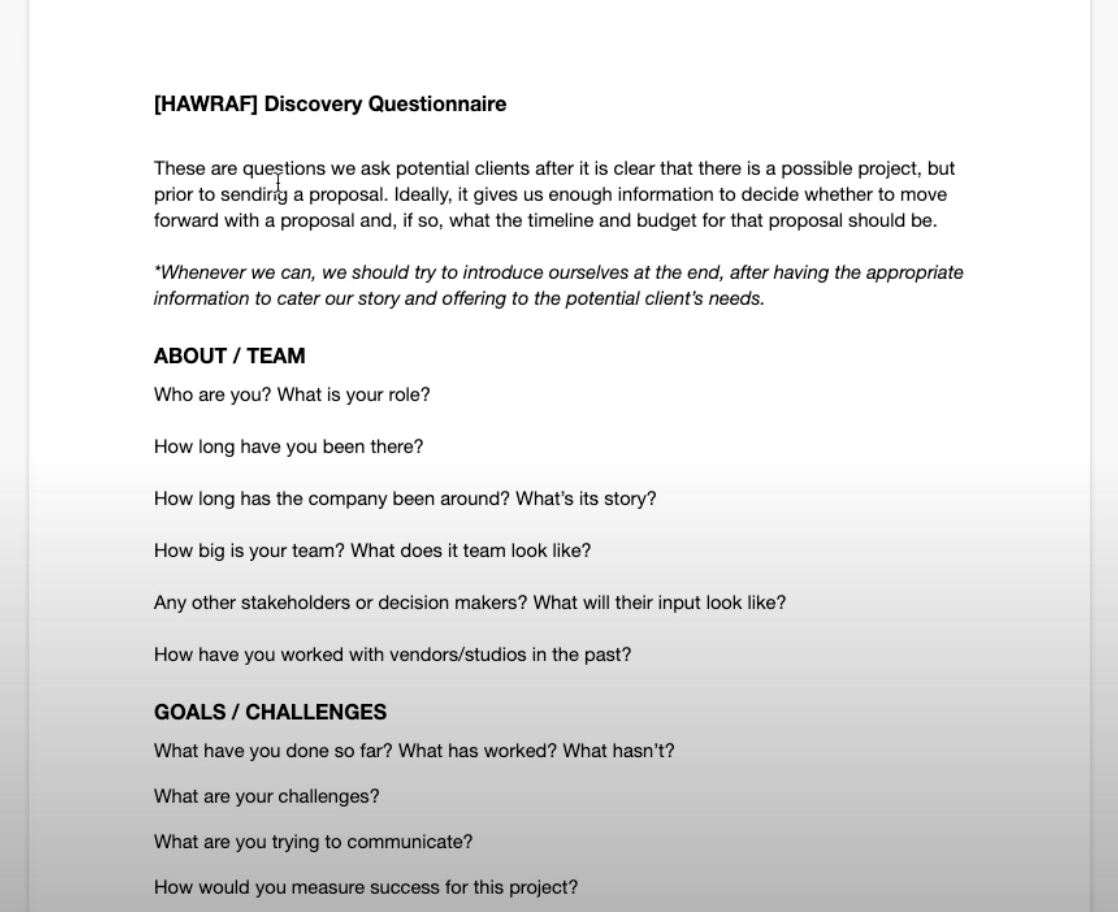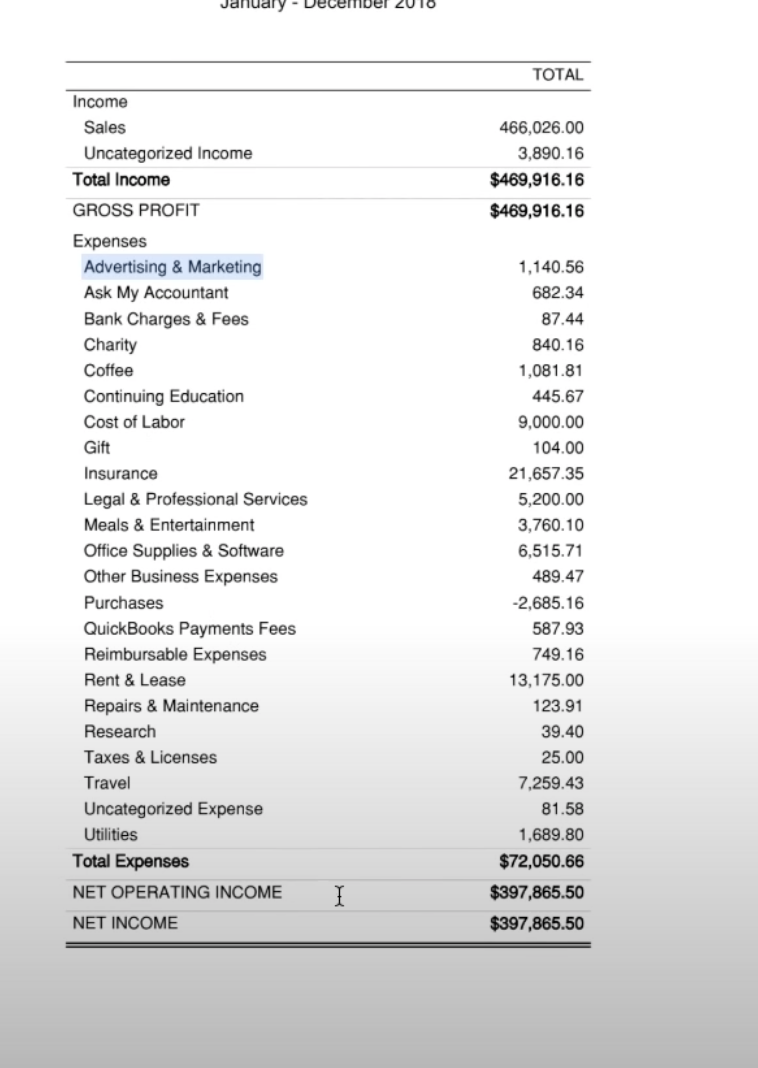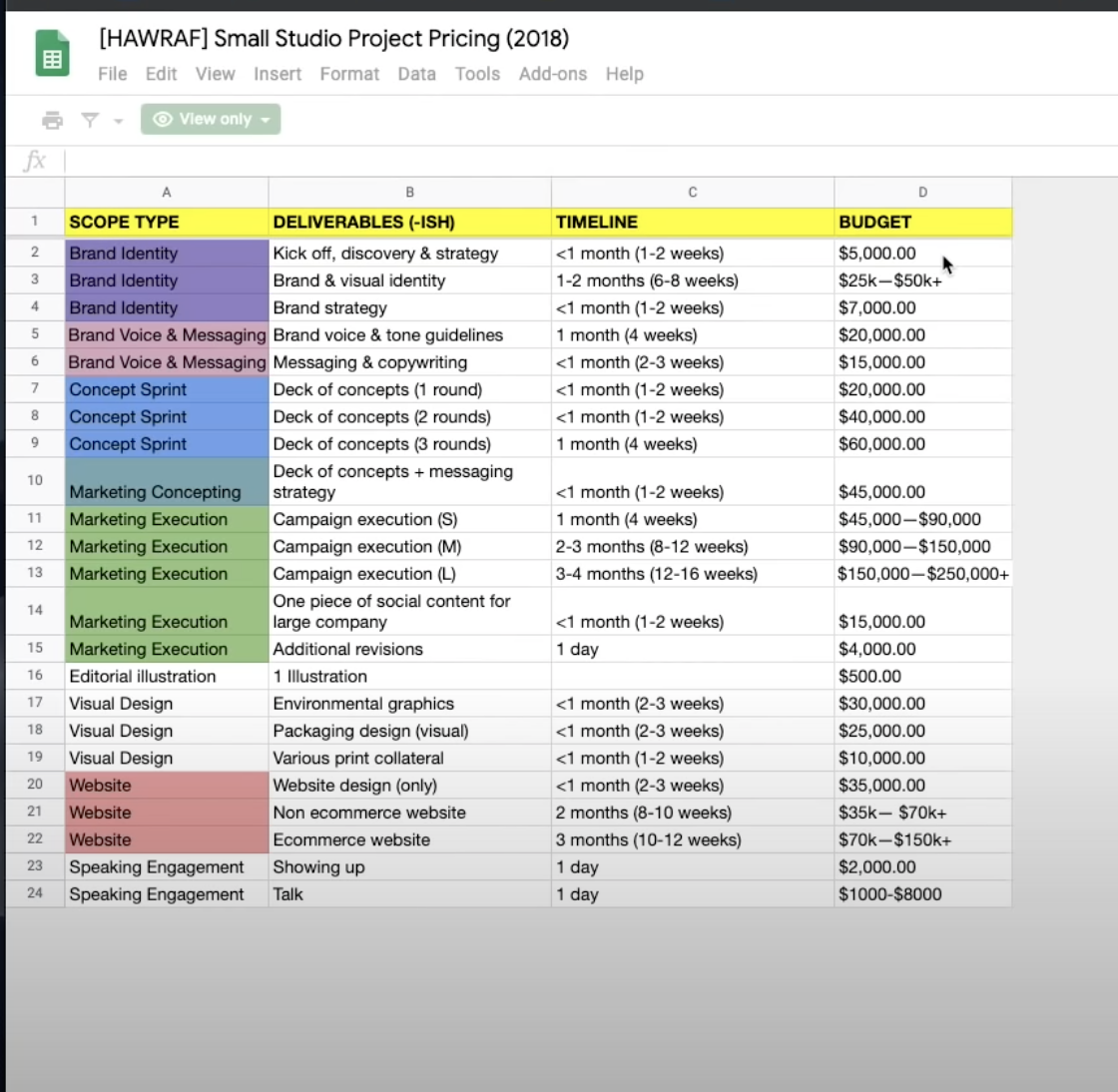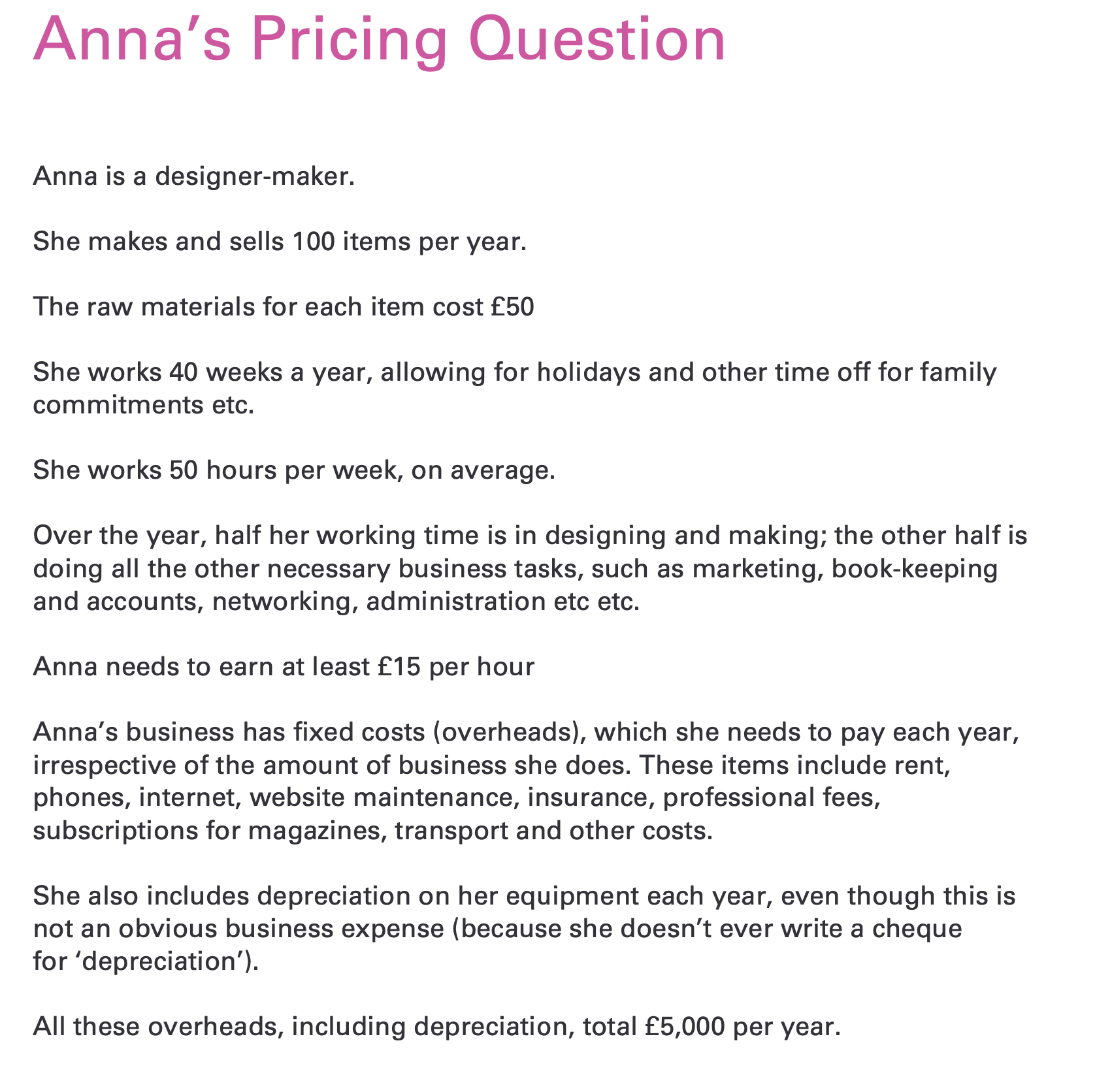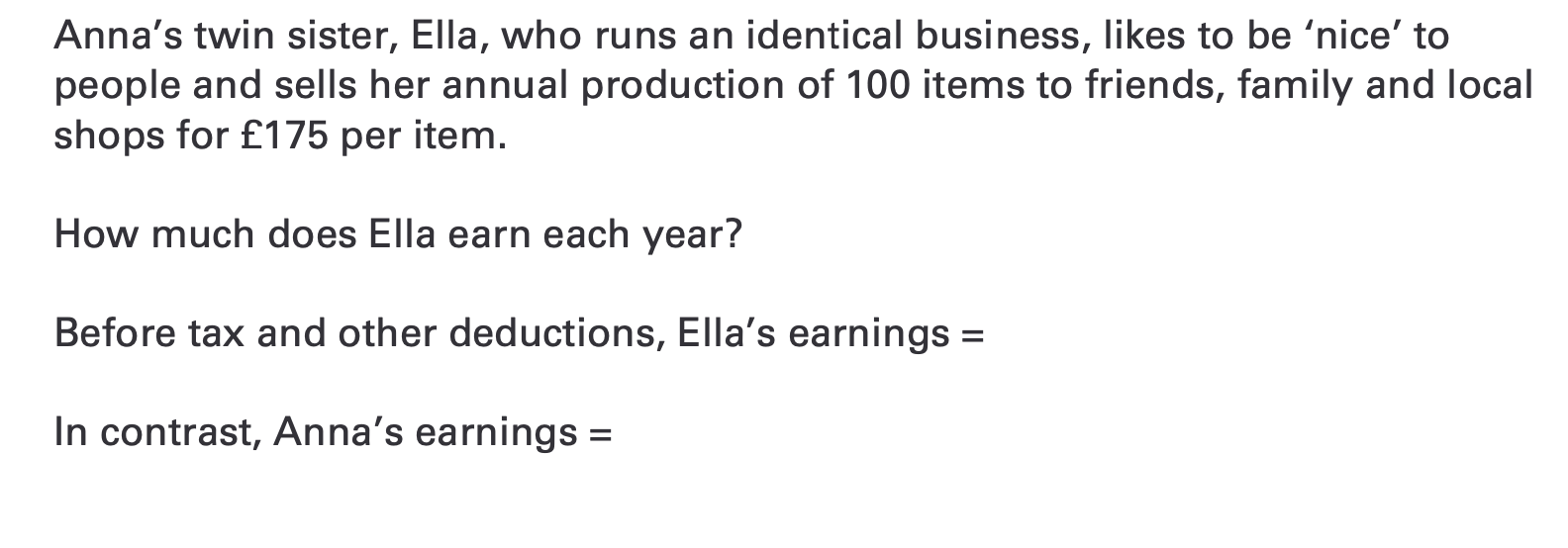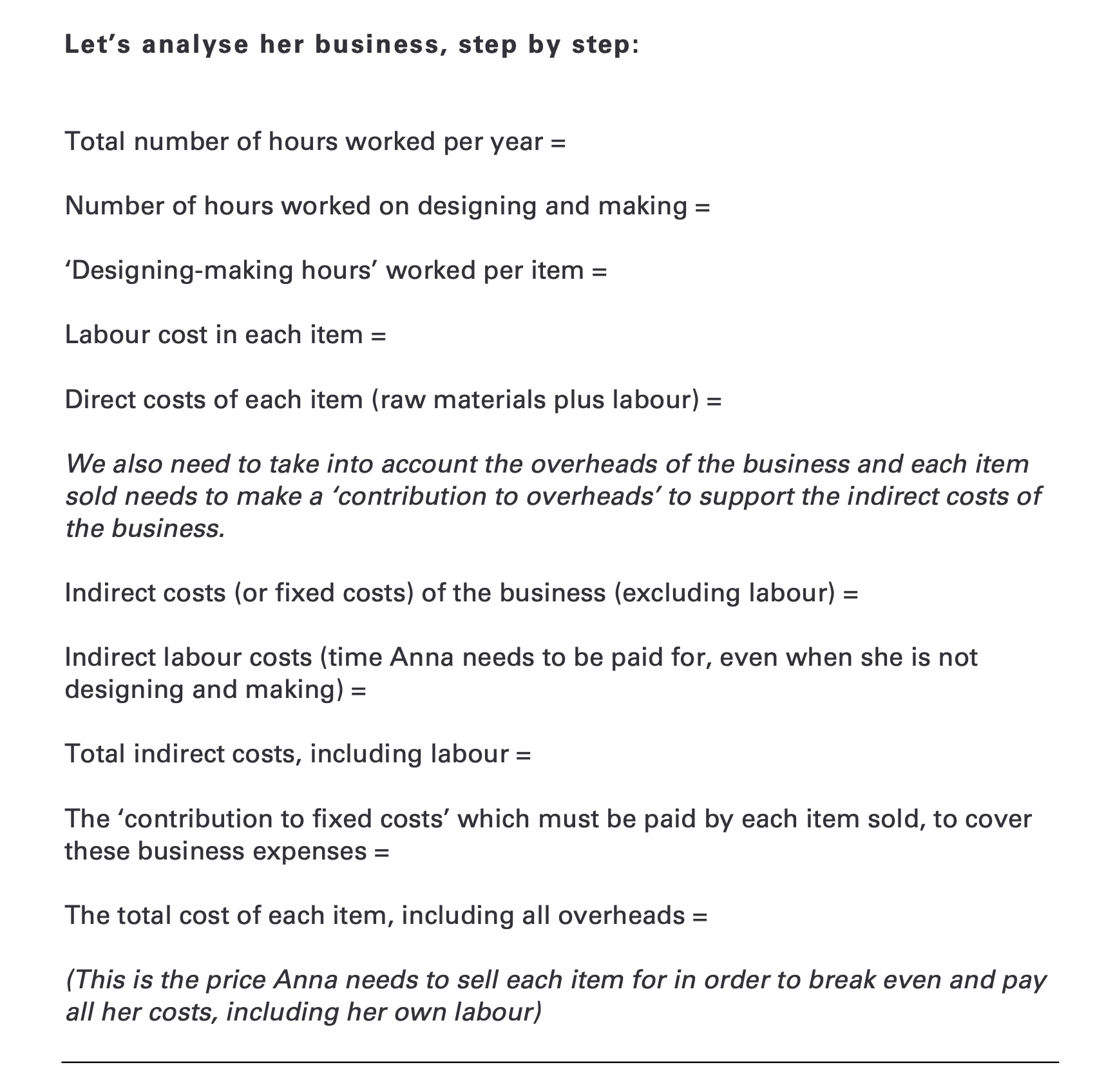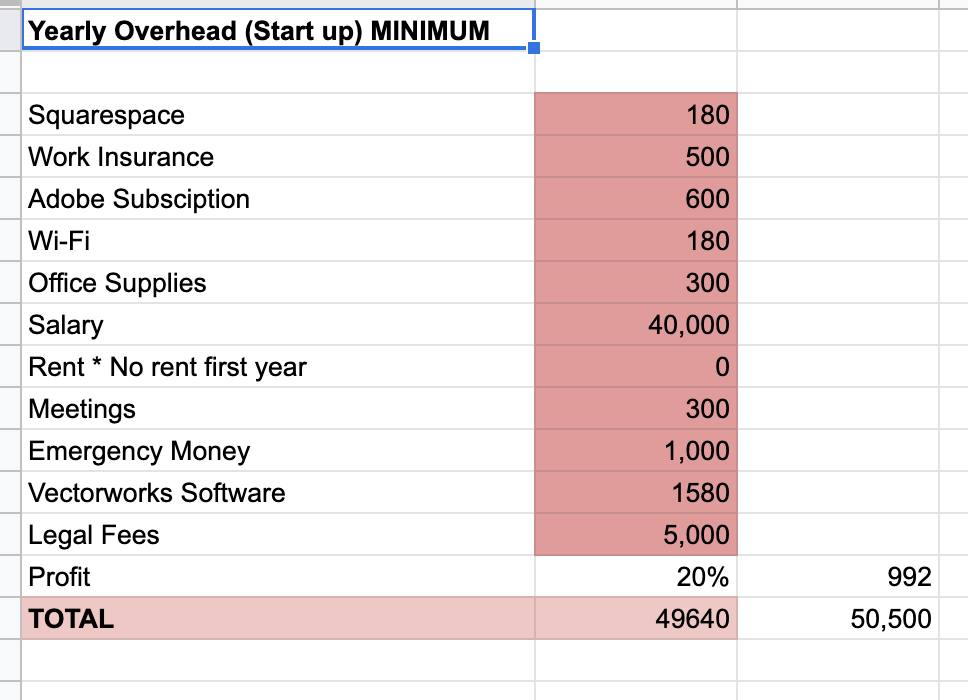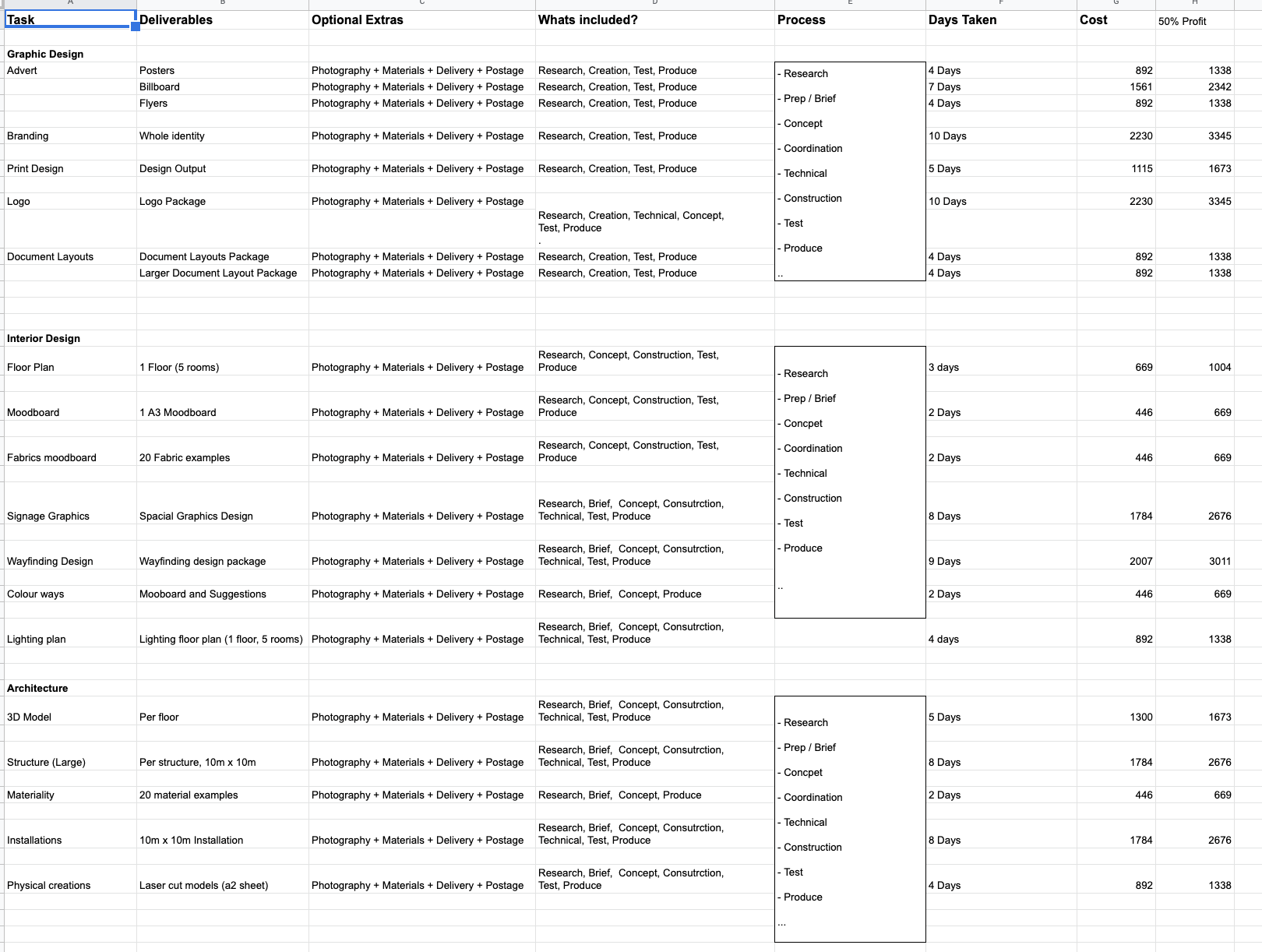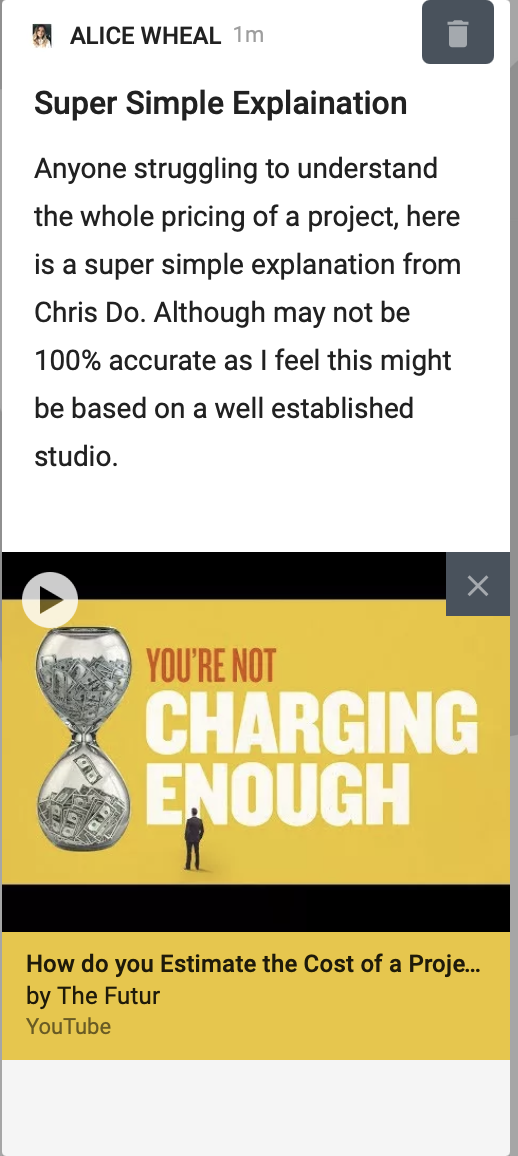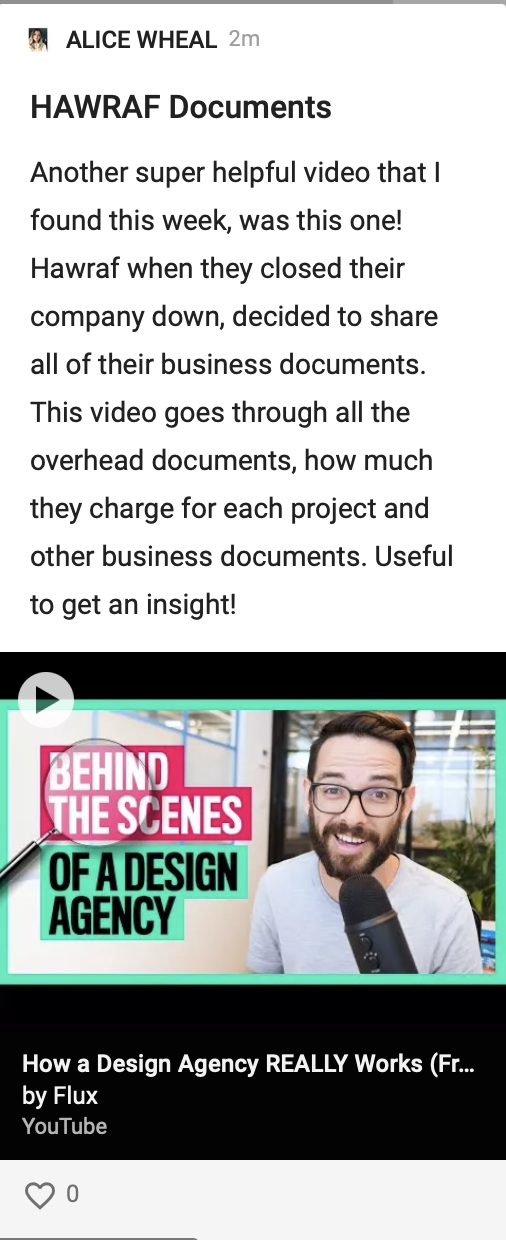Week Two
Lecture Notes
Lecture Reflection
Really interesting lecture this week, which enabled me to gain an insight into different businesses and the way that they are run. I think comparing all of them together, the freelancer did sound particularly negative about the business. I feel that UsTwo seems very corporate from my opinion but the other two companies Studio and Lover seem like really family businesses that I would be happy to be apart off. I though the panel discussion just added things especially the advise for creating a business. Take your own risk, find the niche, learning how to install just and have a side hustle to keep your mind happy. Learning from all of these businesses as a whole especially internally and how they outsource is super helpful to this weeks workshop task.
Resources Notes
Resources Reflection
Key Take aways
R1
Within this resource, it was interesting to learn some of the rules and regulations about the business of design especially when working with clients so regularly. I also thought that it was interesting to learn about how to treat clients in a way that keeps them happy but also make sure that you keep to you own way. The approach that was spoken about - only worry about the clients when they leave you, is a really different way of looking at the overall picture. I also never thought about the legal structures or the legality of use of fonts before which is something that I will have to think about in the future.
R2
I never knew that associations within designs existed, which is the first take away from this week. I think this concept and idea is amazing as it helps bride the gap between design and business but also helps out and supports those. Within this website there were also job advertisements but also advise to what areas you can go in.
R3
Another association for society of designers. I though this was a-lot more detailed and in depth than the previous resource. This website had the Moto learning to earning which I thought was a really clever slogan. It also had a lot of other services including education, insurance and portfolio help. All things of which a is crucial to a designer.
Interesting stats that was worth taking note of for this week:
Research
Business Models, Studios, Estimating, Invoicing and Budget Management
Studio Morross
I wanted to fine out more information about Kate and Her business. I found this inspirational insight video which explained a little bit more about what she does:
Within the Video:
When created the studio, it was a reaction to working alone
Limitation to what you can achieve
Multiple job titles
2 Projects managers
1 Studio Manager
Accounts team
4 designer / illustrators / typography
Multidiscipliners
3 Motion Designers
Motion team is more flexible.
11 People
Its not very defined
When starting - its finding a money to pay people
Extra Cash to pay a wage
Extra money so you can pay other people to work for you
Risk taking is a common place
Good instinct
Good insight
Educate constantly
New ways of creating work
What that might mean
When you start a business
Really want that side of it
Desire to get into the weeds of owning a company
Things that aren’t spoken about but are apart of the business.
Everyone needs to be on a level
Foster an environment where thats possible
Navigating a new landscape
Create better environments for people
Hire administrative assistant is key
Help with sending invoices
Do the creative stuff and earn more money
pay someone else to do something else
Make sure to stay updated with technology and everything else
I couldn’t however find anything that related to any of the business models other that the things she mentioned in the lecture. I feel I will have to research various different business models and estimations to get a grip on it.
Us Two
I did the same with Us two as studio Moross, I wanted to find out more information about the business and what their typical business model was.
https://99u.adobe.com/articles/54497/ustwo-rethinks-the-agency-business-model
The following is from an interview with one of the owners:
What problem did you encounter with the traditional business model of the design consultancy agency and how did you deal with it?
The consultancy model is a good business that can be profitable, but it is risky being a small agency — one client leaving can kill you — and it is not really scalable. You’re at the whim of clients and of economies. If there is a downturn, the marketing and advertising budgets are the first to go, and that kills agencies. It’s like a hamster wheel. The challenge we are looking to overcome is how to use our skills to evolve the business model, which means making money from passive revenue streams, so we don’t always have to pedal to make money.
Was building products initially a revenue or marketing play?
Principally, it was to market ourselves, but through the app store it became possible to make money off of it. However, there are a lot of corpses in the road on the way to Monument Valley. We call it “succailure” — failure on the way to success. We have spent hundreds of thousands of dollars on apps that have died, but that is part of the journey. We invested $2 or $3 million in Monument Valley, and it has made us $15 million and was featured on House of Cards, so it fulfilled the marketing and passive revenue stream pillars. And adding $15 million to your bottom line over a couple of years is good for business.
How do you determine the budgets and sales goals of your direct-to-consumer products?
It has evolved. Years ago we started by literally making things we felt like, and that was fine. But the reality today is that to make anything of consequence you’re looking at an internal spend of $200,000 to $300,000. The goals are all over the place, like with our app PAUSE, which we did with a friend of ours who is a tai chi expert. That was not going to be the next Facebook, but it was good for us because it was written up by Time as one of the best apps of the year. I think that lots of agencies can design a product, but they don’t have the engineering to build a product. Of those that can, I don’t think many have, because it’s just hard. In another universe, Monument Valley could have been number one for only a few weeks and disappeared after everyone said they’re not going to pay $4.99 for an app.
How have you set your design consultancy rates?
Forecasting the effort required to create something is always tricky, especially when it it a complex problem with design, engineering, and a long timeline. A safe model is to get paid on time and material. We charge by the day, not by the hour, because the hour unit creates quite an unhealthy relationship between a creative and an engineer who think they are delivering a unit of time, when really they are delivering a product.
Design is a beautiful thing because it’s art, but when it comes to product and customer experiences, it’s not just art.
Do things like sales and market-testing factor into your idea generation process?
We don’t market test, but we prototype our consumer products around the company to test stuff out with lots of people. We’re not cynical enough to go, “What’s a big market? Smurfberries? Okay, let’s build a Smurfberries app.” If someone really cares about something, they will put in time on it over the weekends and in the evenings. They’re going to have to dedicate six months to it, almost pathologically — I don’t think if you don’t get pathological about it, it will be successful.
I thought this was a really insightful interview which Is why I copied and pasted it. I will highlight the key points from within.
From this, I split this weeks research down into sections:
Business Models
What is a business model?
a plan for the successful operation of a business, identifying sources of revenue, the intended customer base, products, and details of financing.
https://languages.oup.com/google-dictionary-en/
Studios
Carley Iris
Hawraf - Closed their business
Shared a google drive of their agencies documentation
Looks at what they were charging customers
Also looks at their competitors
What they would show clients to try get them on board
Their overhead costs
Estimating
Estimating costs sounds really challenging but I found this website on clever ways to do so: http://www.thedesigntrust.co.uk/calculate-the-cost-price-of-your-creative-product/
Step 1: Calculate your hourly overhead costs
Start with identifying your annual business overheads.
Overhead costs are costs that need to be paid regardless of sales. Think about it like this: the costs that you have to pay even if you are on holiday or ill. For example include your studio rent, phone, mobile, insurance, utilities, marketing, storage, business rates, and equipment (spread the cost of the latter over a couple of years if it is expensive!).
These are the invoices that you pay on a regular basis. Don’t include your drawings/salary or raw materials in this first step, we’ll get to those later.
The best way to find your business overheads is by checking your monthly or quarterly invoices
Now we need to work out how many hours per year she actually spends on average making hats that she can sell.This is the time spent on making products that can be sold (and therefore hours that generate income), so don’t include your time here that you spent on marketing, admin, meetings and the like.
The hourly overhead costs in our example will then be £12,000/768h = £15.62
It’s very likely that your overheads, in particular your studio costs, is one of the biggest costs for your business (besides your own labour costs!). Therefore it is really important to keep your overheads as low as possible
Step 2: Calculate your hourly wage
Let’s say the milliner wants to earn gross £22K p.a.
This is a gross figure that includes national insurance and tax etc. The salary that she would actually get is less as she needs to pay tax over £10K of profit in her business.
For our milliner, we use the same hourly figures as in step 1 (48 weeks x 40h x 40% = 768 hours) so that makes an hourly wage requirement of £22K/768 = £28.65
Step 3: Calculate your total hourly rate
This is very straightforward as you need to add step 1 (your hourly overhead costs) with step 2 (hourly wage).
So in the example of our milliner, this would be: £ 15.62 + £28.65 = £ 44.27
Step4: How long will it take you to produce one creative product?
If you don’t know the answer to this question, don’t guess!
Check out with a time sheet and keep a time log. You might be surprised how different your guess is from reality!
Hopefully, you have made your production more efficient and effective by combining various jobs together and produce products in small batches.
Remember to include all production processes, including cutting fabrics, sewing, finishing, and packaging.
Use averages e.g. you cut 6 hats in 2 hours, resulting in 20 min per hat on average.
Let’s say that our milliner took 2hours and a quarter to make one hat, then: 2.25 hours x hourly rate of £ 44.27 = £99.60
It is always good to calculate backwards too:
If you make for 16 hours per week (40% of 40hours), then this calculation means that she should be producing 7 hats per week: 16h/2.25h per hat = 7 hats.
Step 5: Calculate the total material costs
For our example, our milliner will use £22 worth of materials, including fabrics, feathers, and threads.
It’s really important that you keep a record of all the material costs and the receipts too.
Don’t use the cheapest materials: Think about the value that you add with your materials and make sure that the costs are lower than the perceived value. Is it worth it
Step 6: Add contingency
We will use 10% in our example
Step 7: Calculate your total cost price
Add step 4: £ 99.60 + step 5 (material costs): £22 x 110% (contingency) = £133.76
This is the amount that it costs to produce one hat
Another exercise: https://www.davidparrish.com/calculate-prices-creative-industries/
Another source:
https://medium.com/the-apartment/a-freelancers-guide-to-value-based-pricing-5c7c29580cd6
Let’s consider the following scenario. You’ve enquired a freelance photographer to take photos of your wedding day which is ten hours long. The photographer internally assess that this may be a total of fifteen hours work after they’ve accounted for preparation, shooting, packing, transport, editing and delivering.
The freelancer has two options:
Quote their hourly rate of $30 x 15 = $450
Quote based on the value of the photographs = $3,000
Yes, $3,000 is a lot higher than $240. But it’s your Wedding! If your wedding photos were lost, destroyed or gone forever, would pay up to $5,000 to get them back? What would they be worth to you?
The second option shifts the focus to value, not price. You know it will take you fifteen hours to complete the project, but why should the client care? What they do care about is your ability to perform the work efficiently and successfully.
Paying $3,000 for quality photographs that they’re guaranteed to have last more than a lifetime and capture the moment beautifully — that’s the type of conversation you should be having with your client.
Benefits of value based pricing
Pricing based on value benefits both you and your client.
No hidden costs — Unlike charging per hour where you could easily go over the agreed upon time, value based pricing has no hidden costs. The client knows up front the total price, This allows them better plan their finances, leaving no room for argument about the price at the end of a project.
Shows commitment — You can (and should!) ask for a down payment up front before beginning the project. This is often a percentage of the total price and shows commitment from the client that they’re willing to invest in you.
Less admin — Forget about logging your hours, feeling rushed and stressed about completing work in the agreed upon time so that you don’t go over budget. Focus on getting good work done rather than how long it’s taking you.
You’re rewarded for your efficiency — Encourages you to be more wise, efficient and focused with your time. If the project takes longer than you expected, consider it a lesson to give yourself more time in the next project. The more efficiently you finish a project, the sooner you can move onto the next one and earn more.
Allows you to better budget — You’ll know better exactly the amount of money coming in and when, allowing you to better plan your personal or business finances.
Let’s you upsell — You could use different value packages to provide your client with more value than they expected or asked for. This specific kind of price positioning is a great way to upsell.
Conversations are focused on value not time — It shouldn’t matter to the client how long things take you (obviously you want to meet deadlines, but that’s something completely separate). What matters the most is providing them with the best value with a professional approach.
Builds trusting relationships — Clients shouldn’t be penalised for your slowness or misjudgements, which is much more likely to happen if you’ve quoted them an hourly rate and set amount of time the project will take to complete.
How much do you charge for a logo
1500
logo colours typography, brand strategy + illustration, icons and patterns
500
Just the logo
Value to the client is the reason that you can charge such a varied amount.
you are paying for the experience over a period of time.
They want to know your an expert
Within this video Chris Do, walks through the process of looking what to charge clients.
He recommends starting out a spread sheet with. Job, Rate, Days and Sub total
Who’s managing that artist and what if they take longer than the time they thought?
Remember to mark it up - everyone always underestimates what its going to take to do a job.
Somebody has to manage the project
Who’s going to direct this artist - the art director - this estimate has to be more than the artist.
Overhead costs - how do you put that in there? Work station - £500 week.
We need to add profit
10-30% - Mark up.
Overall I found this super simple way of looking at pricing up for a project. Although all the totals might not be accurate as its an American business and it might be well established I feel the basics are there.
Working with Clients:
https://thecreativeindependent.com/guides/a-guide-to-working-with-clients/
Within this article by HAWRAF, who are an interactive design and technology studio which I mentioned previously that have now closed down. It talks about some main points within the article; understanding your value which includes calculating what it costs to be you, calculating what it costs to run your business, calculating your hourly rate and figuring what you should charge for each service.
“Understanding your value”
Calculate how much money you need to make each year, add up all the living expenses that you have.
From this calculation, give yourself 3 income ranges. A bare minimum, a target and a goal.
The things you eat, what you wear and the place you live, things you do plus insurance and tax all need income.
Then we go onto calculate what it costs to run your business. Add up how much it costs to operate your business each year.
This includes, office rent, work insurance, business taxes as well as cost of labor, internet, software, office supplies, advertising and marketing expenses, legal and professional fees.
Add these onto the base with target and goal income.
Cost of living increases 1.5-3% annually.
Now we go on to calculate our hourly rate.
calculate how many hours you and team will work per year. start with 365 then subtract weekends, holidays and vacation days, sick days and then any other days you don’t plan on working. (250 days average)
multiply that with billable hours that you want to work each day.
Divide this by your annual base, target and goal.
Charge your target hourly rate to live comfortably.
Figure out what you should charge each service
list out all the services you offer through your business
track your time to understand how long it takes you to perform this service
multiply hourly rate by the time it takes you to complete each service.
You can scale your service costs depending on different variables
Workshop Challenge
Map a resourcing model for budget and staff allocation to deliver a project or creative initiative of your choice.
If you are thinking about a generic project budgeting exercise, the example below gives an indication of the parameters for consideration. As the last week of this project brief requires you to write a more substantive strategic plan, please ensure you choose a topic or client that is most suited to your own practice interests.
Example
You have been asked to pitch by National Theatre for a campaign to promote a new play, to include:
Promotional poster;
Programme;
Digital banner;
Print;
Design production.
Your client has not given an indication of the budget but would like to pay you fairly. There are no existing images. Please outline the time and costs required to deliver initial stage one body of work across three concepts. Also provide an indication of production costs based on your design proposals.
I decided that I wanted my proposal to be a way-finding spacial design for the local hospital as-well as a signage package.
I decided to split this up in 4 stages to the project:
The initial research,
The design,
The test run
The final product
Which will be split into 3 main phases of the project.
I have also worked out the people that I would need to complete this task.
Interior designer
Graphic Designer
Photographer for after images of the product.
I have also decided that this proposal would be during year 1 of my 5 year plan which is outlined below:
Year 1 - have an admin assistant, a part time accountant and myself - Outsource the rest - Co working space?
Year 2 - Bring on 5 of the outsource staff - Rent studio space
Year 3 - Bring on accountant full time, project manager and 2 more part time design staff
Year 4 - All full time - Possibly increase studio space
Year 5 - Hope to expand with a head of office as well as 2 more full time staff.
I will be following HAWARF outline to discover how to cost up this project. Within the final PDF, I will also be wanting to add my 5 year proposal. As well as a forecast for where i see the business going.
By doing this, I started by looking at the overheads for my personal self and how much i would want to earn.
I also did a maximum and a minimum just to make sure i was earning enough to survive.
I went on to do what I would need for my work overheads too. I think this was important to lay everything out but also as i would only be employing someone for 2 days a week so i didn’t necessarily need to include this within the layout.
The worksheet can be see here: Worksheet
After this, i then watched this weeks webinar by Ben. This really layed things out for the whole pricing and salary etc, which is where i was then getting confused. I took some screenshots of the webinar which i then tried to implement in my own work.
From the above, I went on to create my own version of this. But for what i would want to be paid as a start up for my own business but also how much i was paying my ‘staff’ Then any other staff i need, i would out source work too.
I then went on to work out what i wanted to to include within the business but also how much i would charge each of these. I also did it on a daily rate which i worked out from how much i needed to cover per day to pay me and my one employee. Hopefully profit will be made.
After doing this and working out the costings with a 50% profit on each of the options to make sure i can cover everything. I went onto cost the project.
All of the above workings can be seen here: Worksheet
I translated the information into a final invoice sheet which can be seen above.
Weekly Reflection
I have found this week incredibly hard to get my head around. The initial pricing and I completely understand a lot of the information that i researched about but when setting up a business there are a lot of costs that you don’t even take into consideration. I had never thought about overheads so much before this week as well as what it would cost to employ someone.
Now I do understand, I have enjoyed working through the process and thinking about the things that i could offer within my business in the future. I look forward to working on this within the future weeks.
Ideas Wall Posts
